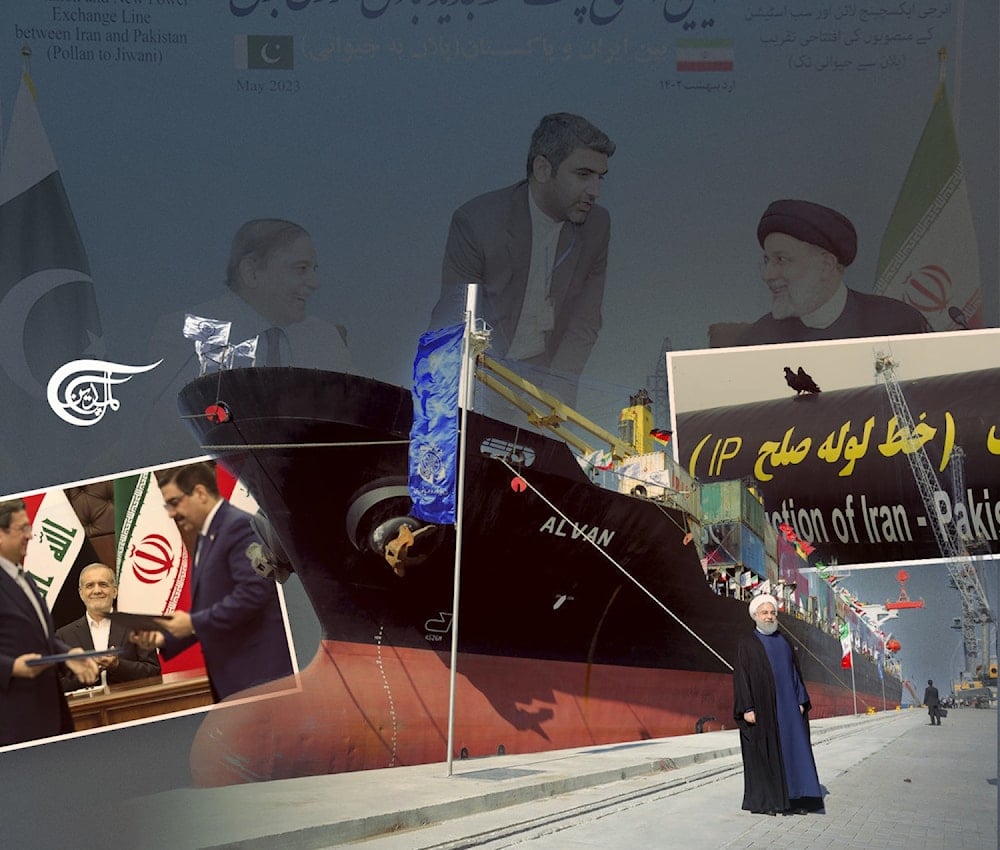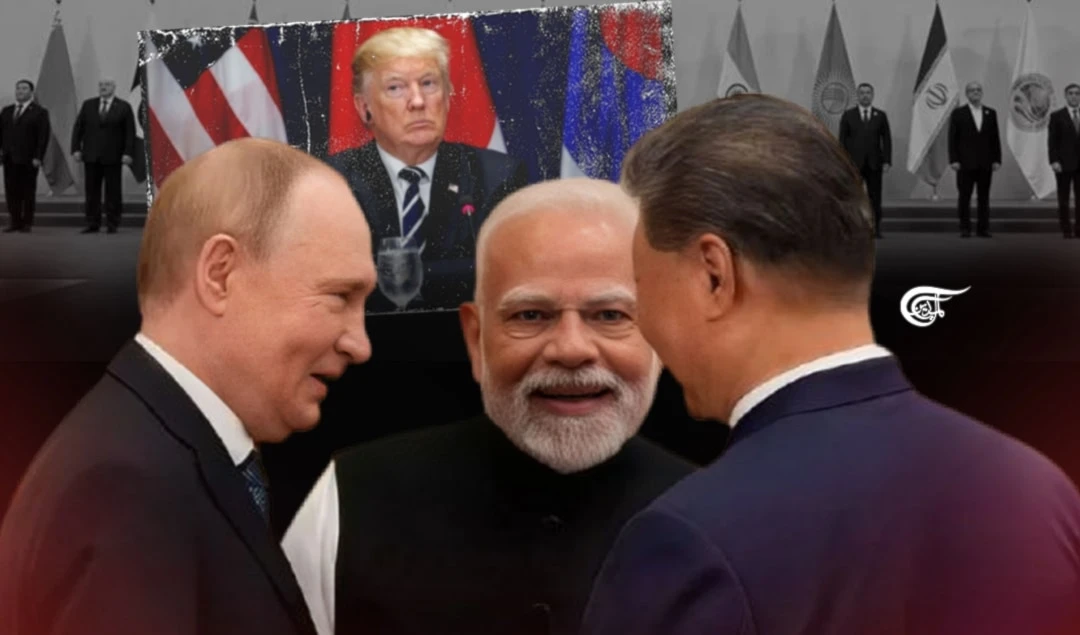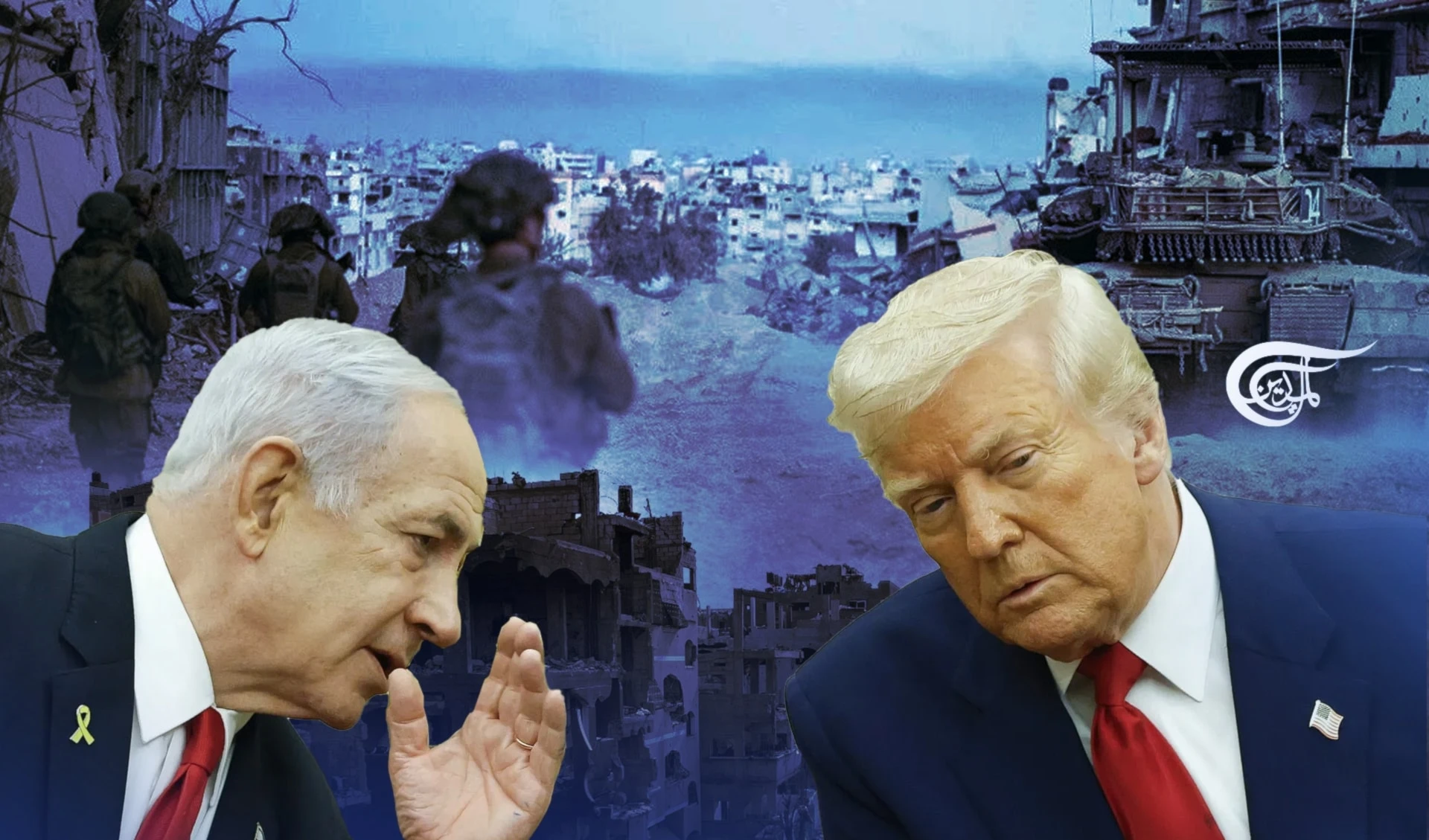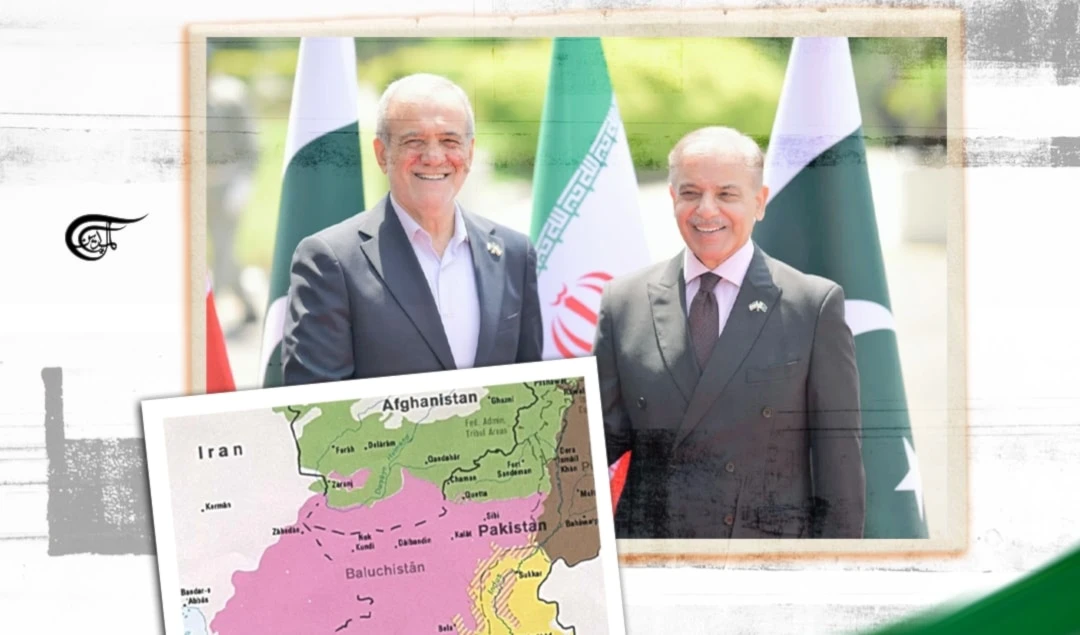Iran’s “Look East” strategy in the Central Asian region is bearing fruit, despite the ongoing tussle with “Israel”
Iran is leveraging its strategic location and "Look East" policy to deepen trade and transit ties with Central Asia, aiming to bypass Western sanctions and emerge as a vital regional connector.
-

The pivotal position Iran occupies as a crossroads on the Eurasian landscape, straddling both the east-west and north-south routes, will serve it well in the long haul (Illustrated by Mahdi Rteil to Al Mayadeen English)
Prior to the unjustifiable and unwarranted blitz by “Israel” on Iran’s nuclear and military sites on Friday, June 13, Iran was pursuing peaceful commercial opportunities in the Central Asian region, differing from the perceptions held by Zionists and the US.
The “look East” policy has yielded positive outcomes for Tehran by enhancing trade relations with the Central Asian region (CAR); however, Tehran was compelled to pause its commercial efforts to safeguard the sovereignty and integrity of the country.
The growing influence of Iran in Central Asia is advantageous for both Tehran and the region, thanks to its strategic ports in the Indian Ocean and its comprehensive road and railway network.
Landlocked Central Asia’s drive for a trade corridor via Iran
Over the last three decades, the landlocked Central Asian nations have actively sought trade routes to India, and since 2022, they have made notable progress via Afghanistan. Despite this, the figures indicate a lack of significant progress, primarily due to the challenging road conditions, the lack of railway infrastructure in Afghanistan, and the bureaucratic obstacles that impede the transportation of goods between Pakistan and India.
In July 2022, a train arrived from Russia, pulling into Sarakhs station on the Turkmenistan-Iranian border, and soon proceeded to Iran's vibrant Persian Gulf port at Bandar Abbas. In September 2022, Uzbekistan eagerly welcomed representatives from the United Nations Economic and Social Commission for Asia and the Pacific (ESCAP) for a meeting.
They were fully engaged in brainstorming the creation of a transport corridor that would extend from Uzbekistan, passing through Turkmenistan, Iran, and Chabahar, all the way to India. Iran and Uzbekistan have formalized agreements to create a joint logistics hub at Bandar-Abbas and Chabahar, with Iran providing Central Asian countries access to these ports.
Nargiza Umarova, a research fellow at the Link Institute for Advanced International Studies (IAIS) at the University of World Economy and Diplomacy (UWED) and an analyst at the non-governmental research institution Knowledge Caravan in Tashkent, Uzbekistan, provided a thorough analysis in an op-ed for the Diplomat regarding the potential benefits to Iran from alleviating its economic isolation during the height of the US sanctions regime.
During an interview with Al Mayadeen English, the esteemed analyst, who possesses a strong interest in the geopolitical dynamics of Central Asia, the Persian Gulf, and the Middle East, thoroughly examined the implications of Iran’s “Look East Policy.” She asserted that Iran encountered several challenges in establishing trade relations with Central Asia because of the sanctions imposed by the US on Tehran; nonetheless, the Central Asian states require a consumer market and strong connectivity with global trade hubs, and Iran provided both of these facilities.
Iran's trade with the region is set to move
Nargiza informed Al Mayadeen English that international sanctions, which pose a significant barrier to Iran’s integration with Central Asia, have limited the total volume of mutual trade to a modest $1.5 billion, although this figure has seen a slight increase recently. She believes that Iran is poised to quadruple its trade with Uzbekistan to $2 billion while also increasing trade with Kazakhstan and Tajikistan to $1 billion each and enhancing trade with Turkmenistan by 30 percent.
Iran possesses, she said, strong scientific and technical capabilities in the fields of engineering, energy, agriculture, chemicals, and pharmaceuticals, along with a foundation for collaborative production investments. She opines that Iran's extensive road and railway network, along with its major ports in the Indian Ocean, provides a significant advantage in collaborating with the landlocked Central Asian republics. Nargiza highlights that Tehran serves a crucial function in the Eurasian Land Bridge that links China and Europe via rail.
“Several overland transit routes from east to west traverse Iran by land, also incorporating the Central Asian countries. The railway corridor connecting China, Kazakhstan, Uzbekistan, Turkmenistan, Iran, Türkiye, and the EU is currently under active development, while the multimodal route linking China, Kyrgyzstan, Uzbekistan, Turkmenistan, Iran, Türkiye, and the EU is functioning simultaneously,” she adds.
Nargiza stated that in 2023, Tehran granted Tashkent’s request to become a part of the Chabahar Agreement. The Uzbek side intends to construct warehouses and a terminal at the seaport. Kazakhstan and Tajikistan are exploring a comparable strategy. Conversations are currently taking place regarding the establishment of transport corridors from Central Asia to India, utilizing Iran’s road and port infrastructure. The proposal aims to enhance trade with one of the largest economies globally, aligning seamlessly with the geoeconomic interests of the Central Asian states
“In August 2024, container shipping commenced from the Indian ports of Mundra, Nhava Sheva, and Chennai to Uzbekistan and Turkmenistan via Iran, utilizing the Bandar Abbas port. The same route facilitated cargo deliveries to Kazakhstan in March 2025. Furthermore, Astana plans to build a specialized terminal and logistics center at the Shahid Rajaee port in southern Iran. These developments clearly illustrate the Central Asian states' commitment to enhancing their relationships with Tehran, she reveals.
Why does Iran want close trade relations with Central Asia?
Tehran pursues its foothold in the CA region for various reasons, particularly due to its ambition for economic diversification and the need to mitigate sanctions. Iran is actively seeking to increase its influence and economic ties with Central Asian nations, primarily due to its desire to access the potential markets by marketing its unique and strategic maritime position for connectivity.
In light of Iran's considerable economic difficulties stemming from US and Western sanctions, Tehran is prioritizing trade with Central Asia to mitigate the impacts of these economic and trade barriers. The aim is to reduce reliance on the West by forging new economic partnerships and establishing itself as a key transit hub for China, India, and the Middle East.
The landlocked nations of Central Asia depend significantly on maritime routes for their trade consignments, and Iran's ports along the Caspian Sea and the Indian Ocean provide them with a strategic edge. Iran seeks to capitalize on this situation and aims to establish itself as a vital transit route for trade connecting Central Asia with the global market.
Iran also aims to utilize its historical and cultural ties with the region to enhance its political and cultural influence in Central Asia. This ambition motivates Iran to pursue strategic partnerships with Tajikistan, Kazakhstan, Kyrgyzstan, and Turkmenistan through various initiatives, including the Eurasian Economic Union and the Shanghai Cooperation Organization (SCO), to solidify its role as a significant player in the region.
Iran and Central Asia's partnership seems to be rapidly expanding. Even though Iranian products made their debut in Central Asian markets back in the early '90s, they still faced fierce market competition. Nevertheless, fresh avenues of collaboration that appreciate Iranian know-how are sprouting up, mainly in oil, hydroelectricity, minerals, processed agricultural products, textiles, and automotive sectors.
Iran is currently sitting pretty as the eighth trading partner for Turkmenistan, the sixteenth for Kazakhstan, and the seventh for Tajikistan. Iran's geographical position puts it in the catbird seat when it comes to the Central Asian states, which are on the lookout for pathways that will ultimately lead them to the southern seas, Europe, and the Mediterranean basin. There are a dime a dozen projects linking the road and rail networks of Central Asia to their Iranian counterparts and then stretching on to Turkey or Afghanistan.
Up to this point, geography has yet to come out on top in its tussle with geopolitics. Nevertheless, the pivotal position Iran occupies as a crossroads on the Eurasian landscape, straddling both the east-west and north-south routes, will serve it well in the long haul. Iran is adapting and adopting a more Asian identity and establishing closer ties with China. This pivot will undoubtedly disrupt the status quo and create new avenues for Iranian collaboration with Central Asia.

 F.M. Shakil
F.M. Shakil
 8 Min Read
8 Min Read









